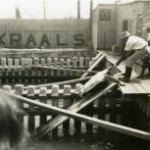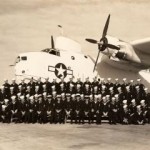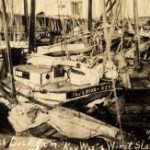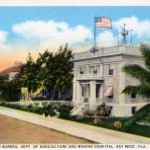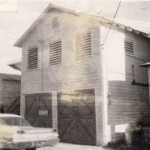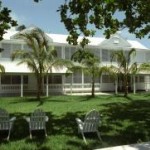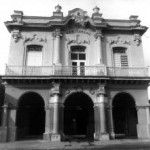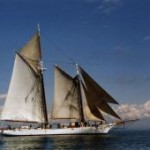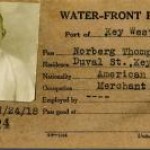Come experience 120 Historic Markers in the Largest Historic District of Frame Buildings in the United States. See photos and listen to the history and stories these buildings have to tell. Take a self-guided tour and discover a little piece of paradise.
Check Out Our YouTube Videos
Bishop Albert Kee Statue
Sometimes, an individual is chosen for recognition because they exemplify a tradition. Bishop Albert Kee, along with three generations of his family (and numerous individuals from Bahama Village) stood on this corner selling fresh conch, fish and conch shells for more than half a century. Community donations and funds from the City of Key West helped produce the life-like bronze statue commemoration in 2015. The commissioned artist was Tom Joris from Bahama Village and the American Bronze Foundry.
Turtle Kraals & Cannery
As long as humans have inhabited the Florida Keys, turtles have been a valuable and much sought after food source. For decades this building and its kraals operated as a turtle cannery in the center of the turtle industry. Kraals take their name from the Dutch African word for "corral". They function as holding pens for captured turtles. Two hundred years of overfishing led to near extinction of the turtle population. The Endangered Species Act passed in 1971 led to the demise of the cannery.
Trumbo Naval Air Station
The Navy broke ground on land originally created for Flagler’s railroad on July 13, 1917. A crucial strategic and educational facility through both World Wars, Trumbo Point has proven its worth time and again. Geographically ideal for seaplanes, Trumbo was used to train pilots and as a base for seaplanes used for submarine patrol throughout the Caribbean and Pacific. The seaplane squadrons deployed from here during the second World War escorted supply convoys and ultimately helped win the war.
1909 & 1910 Hurricane
Key West experienced two major hurricanes in 1909 and 1910. Both hit in October and were rated between a category 3 & 4 hurricane. In 1909, more than 400 buildings were destroyed. Many of the buildings were blown off their foundations, collapsed from hurricane force winds or were washed away. Nearly every ship and dock in the city was badly damaged or destroyed. Estimates of overall damage in Key West were set at one million dollars in 1909 currency.
Weather Bureau
This building represents the vital role accurate weather forecasts played in the growth and vitality of Key West. Before the Weather Bureau, Key West residents relied on their own measurements and telegraph reports to predict oncoming storms. The weather station brought access to more sophisticated weather measurement techniques to warn of dangerous weather. It was often the front line in forecasting the power and path of tropical hurricanes. The building was built by the U.S. Army and served from 1912 - 1957.
Carriage Barn
Built as an auxiliary building, this carriage house was designed as a horse and mule stall. Structures like this were often used to house cows and a wide range of livestock in the crowded and congested neighborhoods of Key West's Historic District. This structure has stayed true to its original architectural style with shiplap siding, a metal clad roof, and sliding barn doors. These buildings predate the use of automobiles and were an integral part of local transportation in the 1800s.
Truman's Little White House
While this house was built for the commanding officer of the Key West Submarine Base, its use by President Harry S. Truman as a site for working vacations earned it fame as "The Little White House." During Truman's 11 trips here from 1946-1953, he negotiated policies ranging from the Marshal Plan and Truman Doctrine, the recognition of Israel, and penning executive orders governing Civil Rights. In subsequent years, the building continued to be used by other presidents for work and leisure.
San Carlos Institute
The San Carlos Institute was founded by Cuban exiles who came to Key West in 1871 to plan the campaign for Cuba's independence from Spain. Many legendary figures of Cuba's independence movement addressed the exile community at the Institute. The most prominent was José MartÃ, Cuba's legendary patriot and poet. This building, built in 1924, was designed by celebrated Cuban architect Francisco Centurión and served the community as a heritage center and as one of the United States' first integrated bilingual schools.
Schooner Western Union
Built between 1938 and 1939, the Western Union is one of the oldest surviving wooden working schooners in the United States and the oldest remaining built in Key West. It laid and maintained telegraph cables between Key West, Cuba, and the Caribbean Island nations. The ship is the flagship of City of Key West and was named the flagship of the State of Florida in 2012. It was listed on the National Register of Historic Places in 1984.
Norberg Thompson
Norberg Thompson, a self-made man and entrepreneur, owned most of the historic district. During the Great Depression, Thompson employed nearly 40% of Key West's residents. His businesses included ship building, sponging, fishing, canning, ice production, cigar box production, and transportation. He pioneered the local shrimping industry, which expanded during the "Florida Pink Gold Rush" (1949- 1970s). Thompson served as mayor from 1915-1917. He was a man of vision and enterprise, featuring prominently in Key West's early 20th century economic development.

